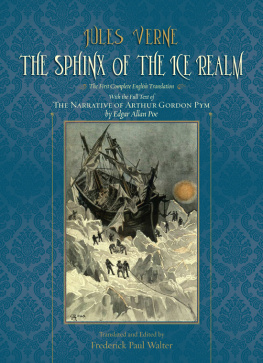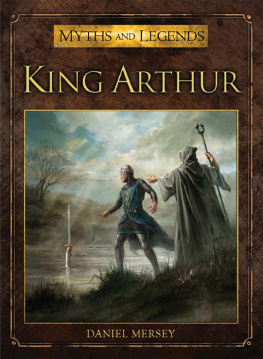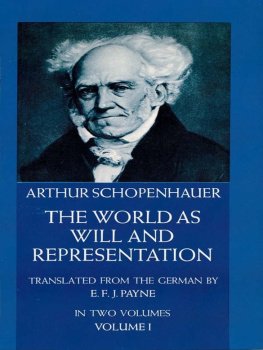
JULES VERNE
THE SPHINX OF THE ICE REALM
THE FIRST COMPLETE ENGLISH TRANSLATION
With the Full Text of
THE NARRATIVE OF ARTHUR GORDON PYM
by Edgar Allan Poe

Translated and Edited by
Frederick Paul Walter

Published by
STATE UNIVERSITY OF NEW YORK PRESS
Albany
Translations and critical materials 2012 by Frederick Paul Walter
All rights reserved
Printed in the United States of America
No part of this book may be used or reproduced in any manner whatsoever without written permission. No part of this book may be stored in a retrieval system or transmitted in any form or by any means including electronic, electrostatic, magnetic tape, mechanical, photocopying, recording, or otherwise without the prior permission in writing of the publisher.
For information, contact
State University of New York Press
www.sunypress.edu
Production and book design, Laurie Searl
Marketing, Fran Keneston
Library of Congress Cataloging-in-Publication Data
Verne, Jules, 18281905.
[Sphinx des glaces. English]
The sphinx of the ice realm : the first complete English translation, with the full text of the narrative of Arthur Gordon Pym by Edgar Allan Poe / Jules Verne; translated and edited by Frederick Paul Walter.
p. cm.
Excelsior Editions.
Includes bibliographical references.
ISBN 978-1-4384-4212-9 (pbk. : alk. paper) ISBN 978-1-4384-4211-2 (hardcover : alk. paper)
I. Walter, Frederick Paul. II. Poe, Edgar Allan, 18091849. Narrative of Arthur Gordon Pym. III. Title.
PQ2469.S64E5 2011
843'.8dc23
2011030247
10 9 8 7 6 5 4 3 2 1
For my wife
BARBARA BRYANT
model of patience, tolerance, common sense, and clear writing
FOREWORD
JULES VERNE, MANHUNTER
 n 1855 he was a nobody. He'd sold a short story, three novelettes, and the scripts for a couple small-time comedies. Even so, that was the year Jules Verne published Wintering in the Ice.
n 1855 he was a nobody. He'd sold a short story, three novelettes, and the scripts for a couple small-time comedies. Even so, that was the year Jules Verne published Wintering in the Ice.
This sixteen-chapter novella appeared in the coffee-table monthly La Muse des familles, moves at high speed, and establishes the template for much that followed after Verne became somebody. The hook: a young sea captain goes missing off the coast of Norway, and his father organizes an expedition to find him. Up north the rescuers have to contend with snowbound living conditions, crew mutinies, marauding carnivores, somersaulting icebergs, and other subarctic menaces. The tale's climax is a holocaust of cutlass duels and man-eating polar bears, but the son gets rescued and lives happily ever after with his feisty fiancewho, unusually for the time, goes along on the expedition and has no trouble coping.
It isn't surprising that the youthful Verne would lay a story in the polar regions. Back then there was tremendous interest in the poles simply because nobody had visited either place. In 1827 Britain's William E. Perry had advanced as far north as latitude 82 45, a record that stood for about half a century. But it wasn't for lack of trying: as U.S. Rear Admiral Thomas D. Davies wrote 160 years later (16), by then the Americans had caught the arctic fever, and over the next decades Yankee explorers such as Elisha Kane, Isaac Hayes, and Charles Hall vainly attempted to drive deeper into the arctic. As for the South Pole, England's Sir James Clark Ross got as close as latitude 78 4 in February of 1842, another record that stood for half a centuryand in this case there was a lack of trying.
In those days true-life polar adventures were mostly a seagoing activity, and young Verne was automatically fascinated. After all, his birthplace was the French river town of Nantes, just upstream of a major Atlantic seaport. During his boyhood, according to biographer Herbert R. Lottman (68), he could see sailboats, clipper ships, and three-master schooners all around him. He would row down the Loire River in dreadful leaky boats, one time aboard a skiff that actually sank, marooning him on an islet in classic Crusoe fashion. It didn't keep the adult Verne from turning into an enthusiastic tourist who voyaged to America and repeatedly visited the UK and Scandinavia.
But when he wrote Wintering in the Ice, Verne was a bachelor in his mid twenties, schooled for the law but secretly hoping to build a career as a writer. It would take a while. On the way, luckily, young Jules was exposed to other influencesthe novels of Scott, Cooper, and Dickens, and especially the startling tales of Edgar Allan Poe, which, according to his grandson (Jules-Verne, 30, 35), the youthful Frenchman began reading in the years following 1848. He was struck by the American storyteller's abnormal situations, moral deviation, inclination to the bizarre for its own sake, and the pseudoscience of his ballooning yarns. Reading Poe, his grandson concluded, Verne saw what could be done mixing fantasy and reason. And the time was right: though he had little English and needed to read Poe's stories in translation, they were appearing in French magazines with increasing frequency. In the late 1850s, moreover, a French translation of Poe's only novel appeared, The Narrative of Arthur Gordon Pym (1838), a full-length sea story that toyed with the mysteries of Antarctica. Already enraptured with sailing and polar exploration, the young Frenchman gobbled it up and couldn't get it out of his head.
So there you have the youthful Jules Verne: interested in manhunts, ocean travel, polar exploration, and the disturbing fiction of Edgar Allan Poe. Those interests would never significantly change. And he would obsess over Poe's only novel into his old age, forty years down the pike.
THE HUNT IS ON
In any case it seems that Poe's specter soon gave a huge boost to Verne's writing career. In 1862, by no coincidence at all, the fledgling author finished an adventure novel about ballooning. Pitching it to a major Paris publisher, P.-J. Hetzel, he wound up with both a book contract and a lifelong business relationship. Poe's role in this windfall? Earlier that same year, according to French scholar Claude Aziza (vi-vii), Hetzel had published several of Poe's short stories as translated by William Hughes. Wouldn't this have given Jules Vernewho already knew Baudelaire's translationsthe idea of approaching this editor who had published an author close to his own heart?
Verne never forgot the mesmerizing American writer. In April 1864, not long after linking up with Hetzel, he wrote a lengthy article entitled Edgar Allan Poe and his Works (1864) for the above-mentioned magazine, La Muse des familles. The only piece of literary criticism Verne ever published, it's a bird's-eye view of Poe for the general reader: a summary of his tragic life plus plot rundowns and critiques of some of his short stories. Though he picks occasional nits, his overall tone is admiring, full of both fascination and respect. What's more, it's meaningful that Verne devoted the last chapter of his essay almost entirely to The Narrative of Arthur Gordon Pym. Unusually for Poe, his sole novel ends with a mystifying cliffhanger, and Verne was as baffled and provoked as the rest of the world. Who will ever take it up again? he wrote for his French readers. Somebody more daring than I am, somebody bolder at pushing on into the realm of things impossible. My English translation of this chapter starts on page 377, though, as you'll see, it's hardly Verne's last word on the subject.

















 n 1855 he was a nobody. He'd sold a short story, three novelettes, and the scripts for a couple small-time comedies. Even so, that was the year Jules Verne published Wintering in the Ice.
n 1855 he was a nobody. He'd sold a short story, three novelettes, and the scripts for a couple small-time comedies. Even so, that was the year Jules Verne published Wintering in the Ice.